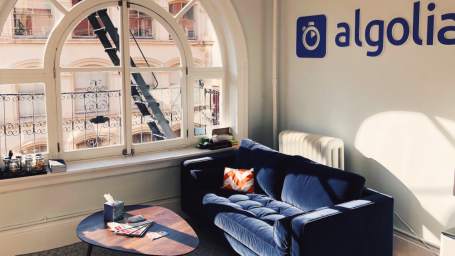Britton Hogge, Operations Manager, has been working for NYC Pride in their current office for over four years. As showrunner, Hogge oversees its operations while editing and curating the annual Pride Guide. It’s no easy feat to manage and streamline the operations at NYC Pride.
"We have about 15-20 users right now. That fluxed a bit when things got busy. We are primarily a volunteer-run organization with a staff of 5 people, the rest are volunteers and have day jobs. Their access right are important because a lot of times they enter the building outside of normal business hours."
High Turnover for Visitors and Volunteers
For a long time, Hogge relied on physical keys to manage access rights. It was the most obvious and conventional choice—given the non-profit and high turnover nature of their company.
“Our board is elected once a year and, while some positions run for two years, most are just a single year turn, so there was a lot of people moving around. The turnover is high as there are a lot of volunteers joining and leaving.”
Issues of missing and lost keys would often crop up, hindering their fluid work process and exacerbating their limited budget.
“We always relied on signing a document that promised that you leave the key when you’re done, but that just started to become overwhelming. Someone would leave mid-year and there would be keys floating around everywhere. Constantly, there were office keys floating around that we don’t have. Changing the lock got to be an expensive burden and an extra thing to keep track of, which wasn’t worth the time and effort.”
Office Automation
They needed an office automation solution that was intuitive.
“We started looking at automated systems or key systems where we could change the code. We were looking for something that would allow us to give access to the space without having to manage the hardware aspect. We didn’t want to keep saying: 'We need your key fob back because they are $150 a piece.'"
As a non-profit, NYC Pride is sensitive to the pricing and cost of a security access system. They required an operational solution that was cost efficient and secure. Most security access options "had a big barrier to entry [where they cost] around 2-3k for a mix of hardware and labor. In addition, replacing a key card or fob is not cheap.” Hogge acknowledged that they needed a cost-efficient keyless access management solution that “allowed [them] to make changes to access easily.”
Hogge loves the idea of being able to delete and create keys on the fly and within any parameters he wants.
“We have a lot of volunteers and sometimes they need to access the space on behalf of someone on the board. Instead of giving my keys for the weekend, I can just create an access key for them that works 10-2 p.m. on Saturday, for example, and they can get in and out without trouble. That’s been super helpful for the style of work that we have here.”
Scalable and Smart Security System
Scalability of their access system was something that Hogge was concerned with. Having a scalable system that could work remotely is helpful, since it saves him the time to always get up and run from one end of the office to the other just to buzz people and visitors in.
“Now anyone who has access to the front door lock can buzz people in without getting up. Having a single key for multiple doors lets us take a lot of the guesswork out of sharing front door and office keys.”








